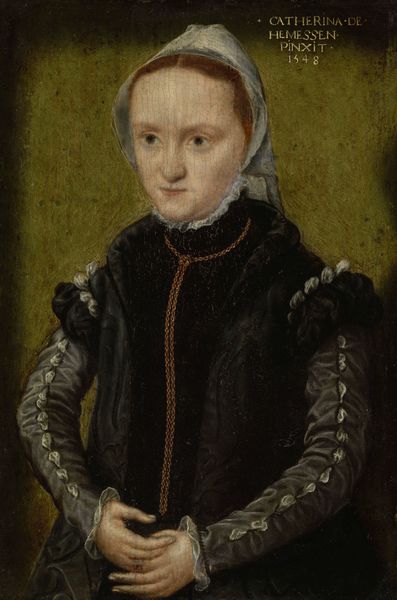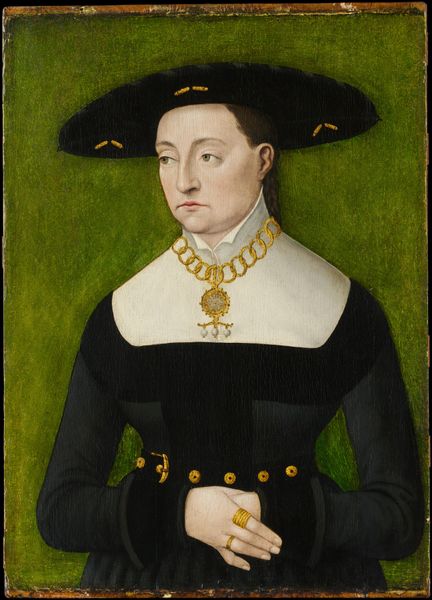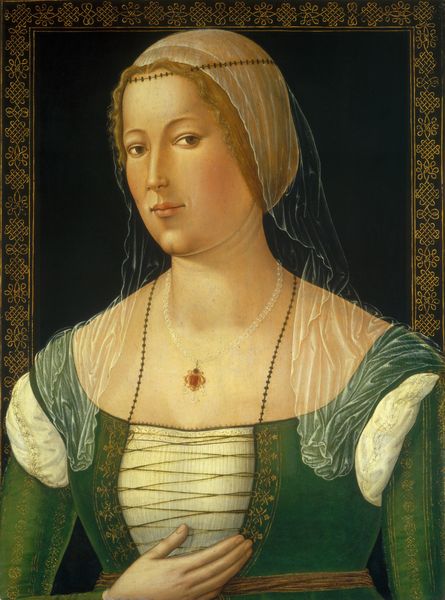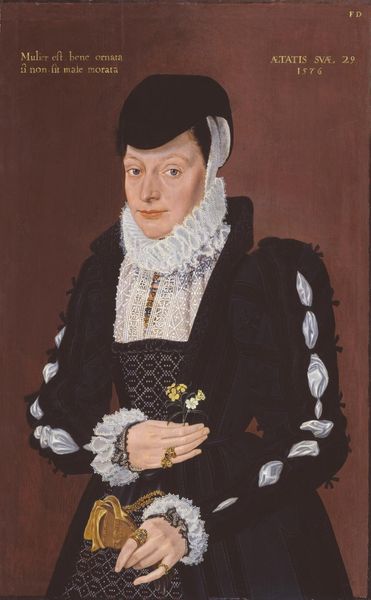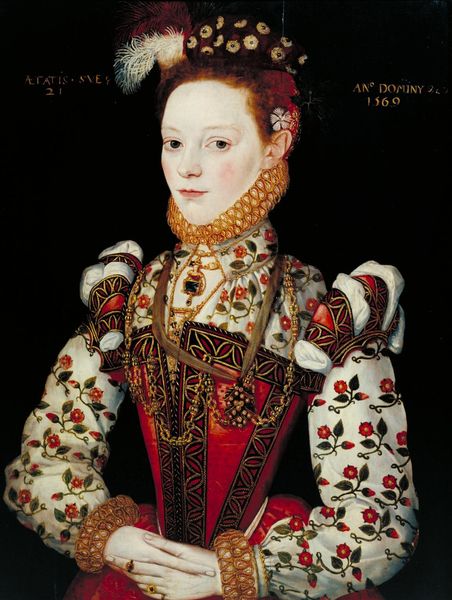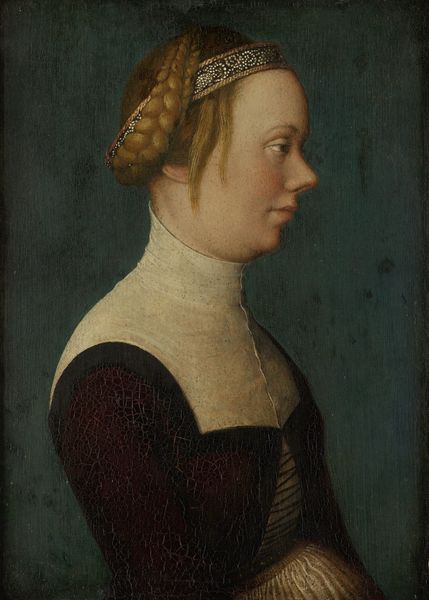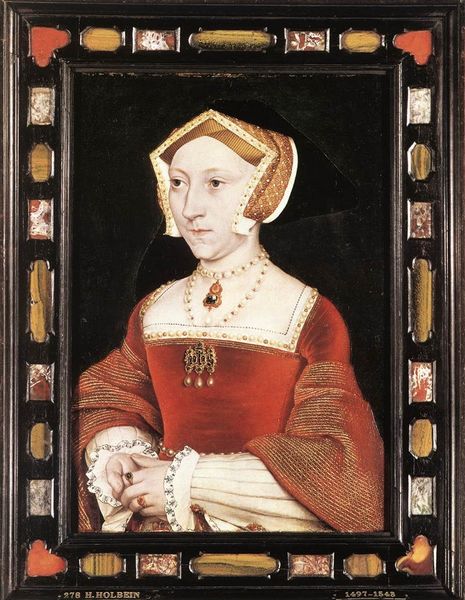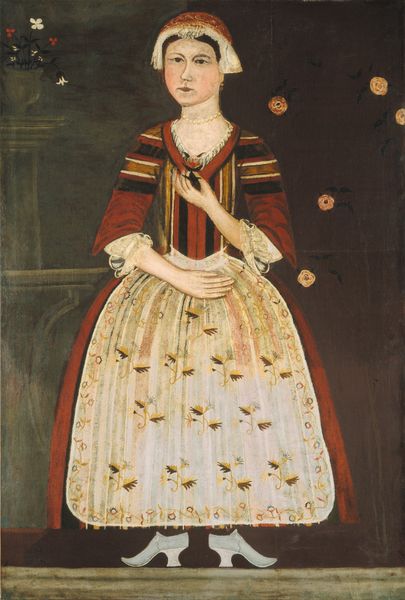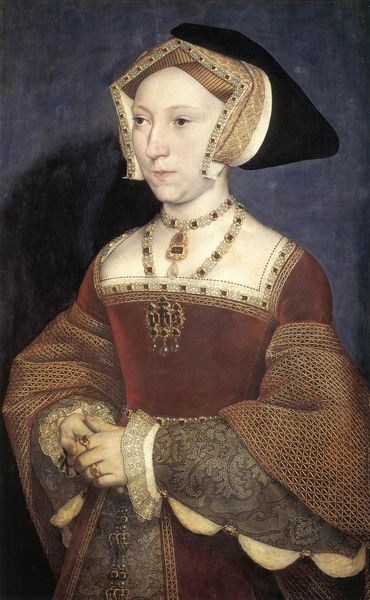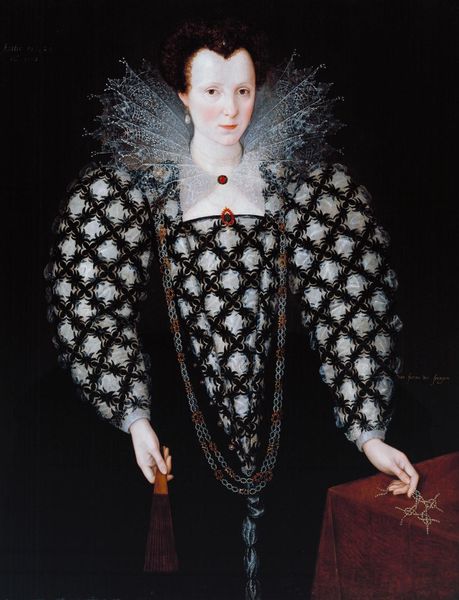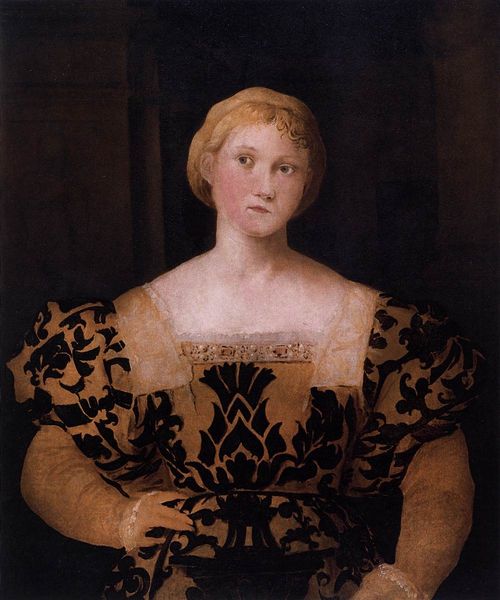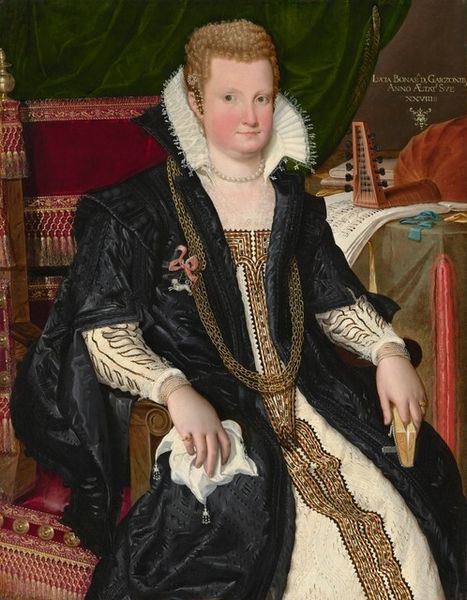
panel, oil-paint
#
portrait
#
panel
#
oil-paint
#
academic-art
#
italian-renaissance
Dimensions: 30 1/8 x 22 11/16 in. (76.52 x 57.63 cm) (panel)
Copyright: Public Domain
Here we see an anonymous Portrait of a Noblewoman on panel, currently held at the Minneapolis Institute of Art. The portrait strikes us with its study of geometric form. Notice how the flat, green background contrasts with the subject’s three-dimensional rendering. The subject is rigidly symmetrical, with the vertical axis running through the center of her face, bisecting the book she holds. The noblewoman’s dress fans out in a V-shape, leading our eye to the book in her hands, a sign of her literacy and status. The ornate collar provides a visual break between the dark dress and the woman's face, with its pale skin and red hair. The geometric construction and symmetry could reference the noblewoman's social position. It is a meditation on the formal conventions of portraiture, using symmetry and geometry to convey ideas about status, education, and the symbolic weight of appearance.
Comments
minneapolisinstituteofart almost 2 years ago
⋮
The woman in this portrait was likely connected to the English court or royal household. She wears a French hood and an elaborate gold brooch, both upper-class indicators. The scene on the brooch shows a seated woman playing what appears to be a lute, with the inscription “Praise the Lorde for ever more.” Her portable prayer book is encased in gold, a type of “girdle book” that was also a high-status item among ladies of the court. The picture was traditionally attributed to Hans Holbein the Yonger, the Swiss painter who served as a court painter to Henry VIII (reign 1509-1547). But it is more likely painted later, by an artist who served a subsequent Tudor monarch. The scholar Roy Strong assigned it to "Circle of William Scrots" ( "The English Icon," 1969). This picture was dated by dendrochronological evidence to around 1540-45, but this scientific analysis can no longer be supported. The sitter's dress is characteristic of a refined courtly style of that period, or later. Indeed, the patterned high collar and the velvet sleeves and elaborated cuffs of her dress are very similar to something worn by Mary I in the portrait putatively ascribed to William Scrots (Strong 1969, p. 73). The present painting was once identified as Mary but the resemblance is not convincing.The sitter is better described as a figure at the Tudor court, possibly a lady in waiting and possibly, because of the provenance, a member of the Bodenham family who served the Tudors, or were active in the Elizabethan era.
Join the conversation
Join millions of artists and users on Artera today and experience the ultimate creative platform.
